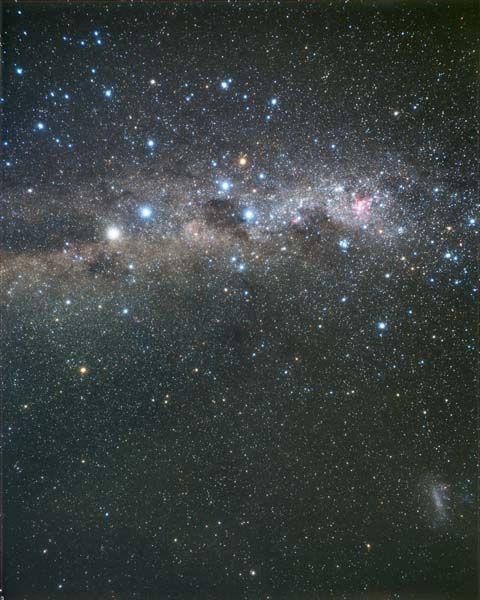DMI image reference Aps. « Previous || Next » Constellations A » H || Constellations I » V

Roll mouse over picture to see constellation figures and outlines
Image and text ©2008 Akira Fujii/David Malin Images.
In the picture above the image covers 56.9 x 71.1 degrees.
Image centre is located at 00:00:45.2, -60:55:12 (H:M:S, D:M:S, J2000)
(with Crux, Chamaeleon, Circinus, Mensa, Musca, Octans, Triangulum Australe and Volans)
Apus is best seen in the early evening in July (southern hemisphere only)
With a declination of -75° Apus (the Bird of Paradise) has always been the below the horizon for the northern hemisphere observers. It was the seafarers of the renaissance who noted star patterns previously unseen by 'western' eyes and Apus was included in Johann Bayer's famous Uranometria in 1603, along with several others in this photograph, the more or less complete ones including Chameleon, Dorado, Musca and Volans. Like many of Bayer's constellations, Apus contains no bright stars and is not very memorable.
The main named stars in this image (Greek alphabet)
Acrux (α Cru), Atria (α TrA), Gacrux (γ Cru), Hadar (Agena, β Cen), Miaplacidus (β Car), Mimosa (Becrux, β Cru), Rigil Kentaurus (Toliman, α Cen), Scutulum (or Aspidiske, ι Car).
Complete constellations other than Apus: *(using the image above)
Chamaeleon*, Circinus*, Crux, Mensa*, Musca, Octans*, Triangulum Australis, Volans.